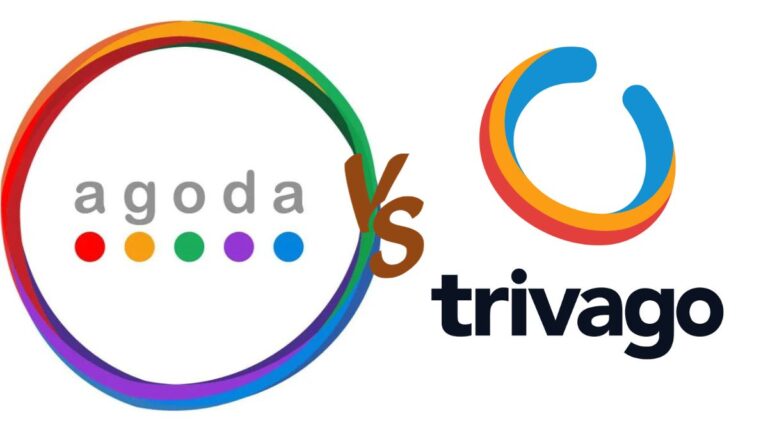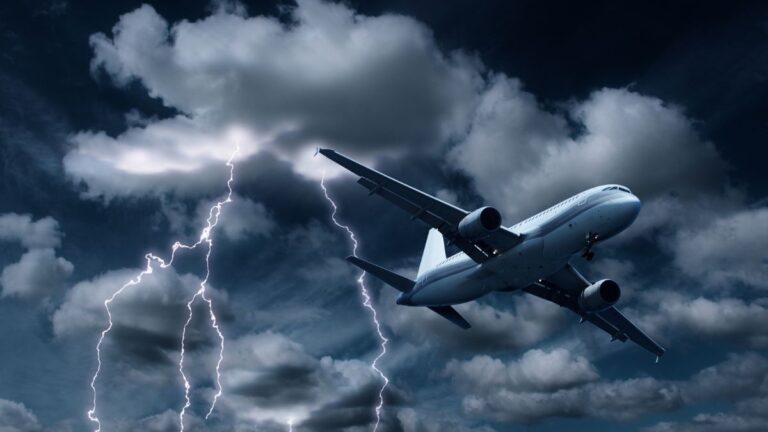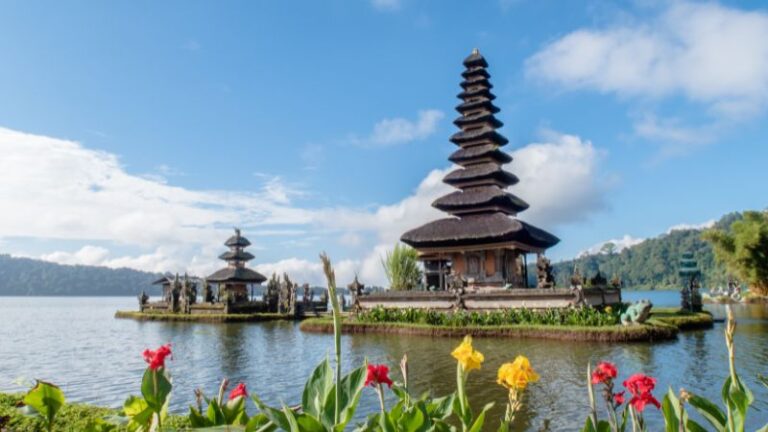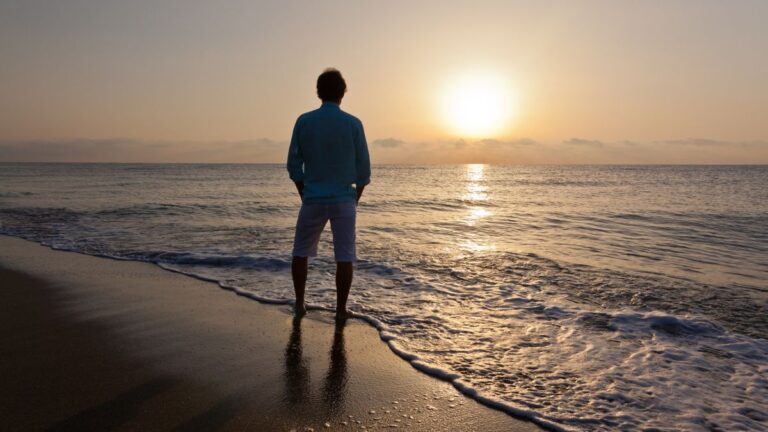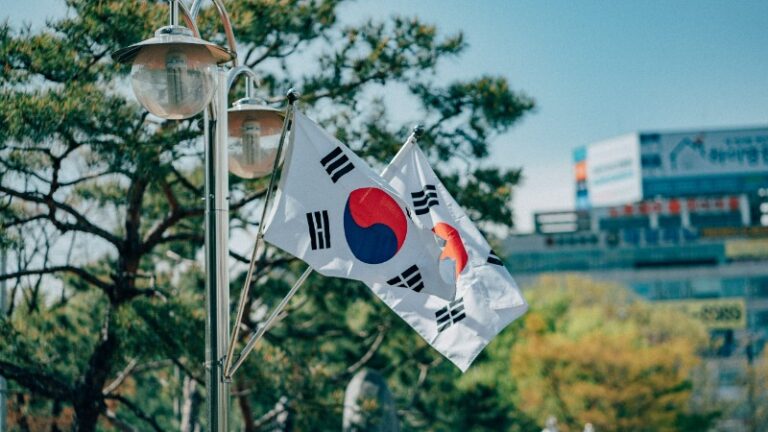50 Facts About Norway You Need to Know Before Traveling There

As participants in Amazon Associates and other programs, we earn from qualifying purchases. This comes at no additional cost to you. For more details, see our Affiliate Disclosure.
Norway, a land of breathtaking natural beauty, deep-rooted Viking history, and innovative societal norms, stands as a beacon of intrigue and fascination for travelers from around the globe. Before embarking on your Nordic adventure to this country known for its dramatic fjords, northern lights, and midnight sun, it’s essential to arm yourself with knowledge that extends beyond the surface level. From its environmental leadership to the cultural nuances that define its people’s way of life, understanding these 50 facts about Norway will not only enhance your travel experience but also deepen your appreciation for the country’s unique blend of nature, culture, and innovation. Here are 50 must-know facts about Norway to guide you as you prepare to explore the land of the Vikings.
1. Land of the Midnight Sun
During the summer months, Norway transforms into the magical Land of the Midnight Sun, where the sun never sets above the Arctic Circle. This natural phenomenon allows for 24 hours of daylight, offering endless opportunities for exploration and adventure. Visitors can experience this surreal daylight at its peak from late May to late July, particularly in places like Nordkapp, where the sun hovers over the horizon, casting a golden glow that bathes the stunning landscapes in an ethereal light. It’s an ideal time for hiking, sightseeing, and participating in various outdoor activities under the midnight sun.
2. The Northern Lights Phenomenon
The Northern Lights, or Aurora Borealis, is a mesmerizing display of natural light that illuminates the night sky in Norway’s far north between late autumn and early spring. This spectacular phenomenon is caused by the collision of solar particles with the Earth’s atmosphere, resulting in vibrant streaks of green, purple, and pink across the sky. Tromsø, known as the Gateway to the Arctic, offers one of the best vantage points to witness this breathtaking spectacle, making it a bucket-list destination for those seeking the awe-inspiring beauty of the auroras.
3. Home to the World’s Longest Tunnel
Norway boasts the Lærdal Tunnel, the world’s longest road tunnel, stretching an impressive 24.5 kilometers (over 15 miles) between Aurland and Lærdal. This engineering marvel was designed not only for efficiency but also for comfort, with lighting and cavernous spaces breaking up the journey to prevent driver fatigue. The tunnel’s sections are lit in such a way to mimic sunrise, providing a unique and somewhat surreal driving experience through the heart of the Norwegian mountains.
4. Norway’s Deep Viking Roots
Norway’s rich history is deeply intertwined with the Vikings, the legendary seafarers who originated from this rugged land in the late 8th to early 11th century. The country is dotted with museums, monuments, and historical sites dedicated to these formidable warriors and explorers. Visitors can delve into the Viking Age by exploring the Viking Ship Museum in Oslo, which houses well-preserved Viking ships and artifacts, offering a glimpse into the lives, cultures, and conquests of these Norse people.
5. A Leader in Sustainable Energy
Norway is a global leader in sustainable energy, primarily hydroelectric power, which constitutes around 96% of its domestic electricity production. The country’s commitment to sustainability extends beyond energy, with ambitious policies on electric vehicles, waste management, and greenhouse gas emission reductions. This focus on green living not only preserves the stunning natural environment but also positions Norway at the forefront of the fight against climate change.
6. The Norwegian Fjords
The Norwegian Fjords are among the most dramatic and breathtaking landscapes in the world, with deep blue waters, towering cliffs, and cascading waterfalls. These UNESCO World Heritage Sites, such as the Geirangerfjord and Nærøyfjord, offer visitors a chance to witness the awe-inspiring beauty of nature. Cruises and hikes are popular ways to explore these majestic fjords, providing unforgettable views and a serene connection with nature.
7. A Coffee Lover’s Paradise
Norway is one of the world’s leading coffee-consuming countries per capita, with a vibrant coffee culture that emphasizes quality and tradition. The Norwegian coffee experience is about more than just caffeine; it’s a social ritual known as ‘kaffepause’, a break that encourages slowing down and enjoying the moment. From Oslo’s trendy cafés to small-town coffee shops, visitors can savor expertly brewed, light-roasted coffee, a testament to the country’s love affair with the bean.
8. The Birthplace of Skiing
Norway is considered the birthplace of skiing, with a history of the sport dating back over 4,000 years, as depicted in ancient rock carvings. Today, skiing is both a favored pastime and a competitive sport in Norway, embodying the Norwegian spirit of ‘friluftsliv’, or open-air living. Destinations like Lillehammer, which hosted the 1994 Winter Olympics, offer world-class ski resorts, while the country’s natural landscapes provide endless opportunities for cross-country skiing.
9. Unique Wooden Stave Churches
Norway is home to unique wooden stave churches, architectural masterpieces from the Middle Ages that are among the country’s most precious cultural treasures. These intricately designed churches, built entirely from wood without the use of nails, feature ornate carvings that blend pagan Norse and Christian motifs. The best-preserved example, the Urnes Stave Church, is a UNESCO World Heritage Site that offers insight into medieval Scandinavian church art and architecture.
10. The Sami People: Indigenous Culture
The Sami people, the indigenous inhabitants of the Arctic area of Sápmi, which spans parts of Norway, Sweden, Finland, and Russia, have a rich cultural heritage that has been preserved for thousands of years. They are renowned for their traditional practices, such as reindeer herding, crafting, and the distinct yoik singing. Visitors to Norway can learn about the Sami way of life, their connection to the land, and their efforts to preserve their language and traditions through museums, cultural centers, and festivals.
11. The Nobel Peace Prize Venue
Norway plays a unique role in international diplomacy as the host country for the Nobel Peace Prize. Unlike the other Nobel Prizes, which are awarded in Sweden, the Peace Prize is presented annually in Oslo, in accordance with the will of Alfred Nobel. The ceremony takes place at the Oslo City Hall, and the Nobel Peace Center, located nearby, showcases the ideals and achievements of the laureates, promoting peace and conflict resolution worldwide.
12. High Cost of Living
Norway is known for its high standard of living, which comes with a high cost of living. Prices for goods and services, including dining, accommodation, and transportation, are among the highest in the world. This is partly due to the country’s strong economy, high wages, and the value placed on work-life balance. Visitors should budget accordingly but can take comfort in knowing that the quality of goods and services is generally exceptional.
13. The Right to Roam Freely
Norway’s ‘allemannsretten’, or the right to roam, is a unique principle that allows everyone free access to the countryside, forests, and mountains, regardless of private ownership. This right encourages an active outdoor lifestyle and a deep respect for nature, allowing for hiking, camping, and berry picking in most open country areas, as long as the land is not cultivated and privacy is respected. It’s a testament to Norway’s commitment to preserving and sharing its natural beauty.
14. Tunnels and Bridges Galore
Norway’s challenging terrain and extensive coastline have led to the development of an impressive infrastructure of tunnels and bridges, designed to connect remote areas and facilitate travel. The country boasts over 1,000 tunnels, including some of the world’s most innovative underwater tunnels, and majestic bridges like the Storseisundet Bridge, part of the Atlantic Ocean Road, which appears to dive into the sea. These engineering feats not only enhance connectivity but also offer dramatic views and a unique driving experience.
15. The Iconic Atlantic Ocean Road
The Atlantic Ocean Road is a marvel of engineering and one of Norway’s most scenic drives, stretching 8.3 kilometers across an archipelago in the Norwegian Sea. Known for its curvy roads and high bridges that leap from island to island, the road offers stunning views of the ocean, making it a popular destination for both drivers and cyclists. The route is particularly dramatic during stormy weather when the waves crash over the pavement and the wind whistles through the air.
16. A Taste of Brunost: Traditional Brown Cheese
Brunost, or brown cheese, is a uniquely Norwegian delicacy with a sweet, caramel-like taste, resulting from the slow simmering of milk, cream, and whey. It comes in several varieties and is a staple of the Norwegian diet, often enjoyed sliced thin atop warm, freshly baked bread. Brunost has a distinctive flavor and texture that can be surprising to newcomers but is cherished by Norwegians and represents the country’s culinary tradition and innovation.
17. The Arctic Archipelago of Svalbard
The Arctic Archipelago of Svalbard, located midway between mainland Norway and the North Pole, is a frontier of untouched Arctic wilderness. Known for its rugged terrain, glaciers, and polar bears, Svalbard offers one of the world’s most remote travel experiences. The archipelago is a hub for arctic research and adventure tourism, offering activities such as dog sledding, snowmobile safaris, and expeditions to see the Northern Lights in one of the few places they can be observed during the daytime.
18. Land of Trolls and Folklore
Norwegian culture is rich in tales of trolls and other mythical creatures that have been part of the country’s folklore for centuries. These stories, passed down through generations, depict trolls as powerful beings that reside in the mountains and forests, often depicted humorously in modern Norwegian culture. The fascination with trolls is evident in art, literature, and attractions like Trollstigen, a serpentine mountain road named after these mythical creatures, offering breathtaking views and a touch of magic.
19. The Oil Economy
Norway’s economy underwent a transformation in the late 20th century with the discovery of oil in the North Sea. Today, it is one of the world’s largest exporters of oil and natural gas, which has funded a significant portion of the country’s wealth and high standard of living. The Government Pension Fund of Norway, fueled by oil profits, is among the world’s largest sovereign wealth funds, investing in various international assets to ensure the country’s economic future.
20. World-Renowned Norwegian Salmon
Norwegian salmon is famed for its quality and is a significant export product, enjoyed by seafood lovers around the globe. The cold, clear waters of Norway are ideal for aquaculture, allowing for the production of salmon that is both delicious and sustainable. This pink fish is a staple in Norwegian cuisine, prepared in various ways from smoked salmon to grilled fillets, highlighting the country’s connection to the sea and its resources.
21. Strict Alcohol Regulations
Norway enforces strict alcohol regulations, with a state-owned monopoly, Vinmonopolet, controlling the sale of wine, spirits, and strong beer. These measures are designed to limit consumption and protect public health, resulting in high prices and limited availability outside designated stores. Despite these restrictions, Norway boasts a growing craft beer scene and a tradition of home brewing, reflecting a balance between regulation and a rich drinking culture.
22. The Polar Bear Capital of the World
The Svalbard archipelago is often referred to as the Polar Bear Capital of the World, home to more polar bears than humans. These majestic creatures are a symbol of the Arctic’s wild and pristine nature but also remind visitors of the fragility of our environment. Svalbard offers unique opportunities to observe polar bears in their natural habitat, emphasizing the importance of conservation efforts to protect these magnificent animals and their ecosystem.
23. A Country of Glaciers
Norway’s landscape is dramatically marked by numerous glaciers, including the Jostedalsbreen, the largest glacier in continental Europe. These icy giants are not only a testament to the country’s ancient geological history but also a draw for tourists and scientists alike. Visitors can embark on guided glacier walks, offering a close-up experience of the glaciers’ grandeur, while also learning about the impacts of climate change on these frozen reservoirs.
24. The Rainiest City in Europe
Bergen, known as the gateway to the fjords, holds the distinction of being Europe’s rainiest city. This maritime climate results in lush, green landscapes and provides a unique backdrop for the city’s colorful wooden houses. Despite its rainy reputation, Bergen’s charm and vibrancy shine through, with its historic Bryggen wharf, bustling fish market, and thriving cultural scene, making it a must-visit destination in Norway.
25. The Lofoten Islands: Beauty Beyond Words
The Lofoten Islands are a mesmerizing blend of towering mountains, deep fjords, squawking seabird colonies, and timeless fishing villages. These islands above the Arctic Circle are renowned for their extraordinary natural beauty, offering unparalleled scenery and outdoor activities such as hiking, kayaking, and fishing. The midnight sun and Northern Lights are among the natural phenomena that make Lofoten a magical place, capturing the hearts of photographers and adventurers alike.
26. Norwegian, A Language of Two Written Forms
Norwegian is unique in having two official written forms: Bokmål and Nynorsk. This linguistic coexistence reflects the country’s diverse history and geography, with Bokmål being more prevalent in urban areas and Nynorsk cherished in rural communities. Despite the differences, both forms are taught in schools, ensuring the preservation and appreciation of Norway’s linguistic diversity.
27. The Tradition of ‘Dugnad’
‘Dugnad’ is a deeply ingrained tradition in Norwegian society, embodying a sense of community and collective effort. It involves voluntary participation in communal work to achieve a common goal, such as neighborhood clean-ups or school fundraisers. This tradition showcases the Norwegian values of cooperation, equality, and mutual respect, contributing to the country’s strong sense of community and social responsibility.
28. A Leading Country for Electric Cars
Norway is at the forefront of the electric vehicle (EV) revolution, boasting the highest per capita number of electric cars in the world. The government’s commitment to sustainability is evident in generous incentives for EV buyers, including tax exemptions, free parking, and access to bus lanes. This push towards electric mobility is part of Norway’s broader strategy to reduce greenhouse gas emissions and promote cleaner, greener transportation options.
29. The Ship Tunnel Project
The Norwegian government has approved plans for the world’s first full-scale ship tunnel, to be carved through the Stad Peninsula. This ambitious project aims to provide a safer navigational route for ships, avoiding the treacherous waters of the Stadhavet Sea. Once completed, the Stad Ship Tunnel will be a testament to Norway’s innovative spirit and engineering prowess, enhancing maritime safety and potentially becoming a new landmark for the country.
30. The National Tourist Routes: Scenic Drives
Norway’s National Tourist Routes are a series of roads that have been specially designed to take visitors through some of the country’s most stunning landscapes. These routes, featuring breathtaking viewpoints, innovative architecture, and artistic installations, offer a unique travel experience, highlighting the beauty of Norway’s natural environment and the creativity of its people. From the dramatic Atlantic Ocean Road to the serene landscapes of the Lofoten Islands, each route provides a journey through the heart of Norway’s majestic scenery.
Continuing with the rest in the next part.
31. A Country Rich in Folk Music
Norwegian folk music, with its haunting hardanger fiddle melodies and vibrant dances, plays a significant role in the country’s cultural heritage. This traditional music reflects the lives and stories of the Norwegian people, passed down through generations. Festivals and folk music schools across Norway keep this rich tradition alive, celebrating the country’s history and fostering a sense of national identity through music.
32. The Tradition of Easter Thrillers
In Norway, Easter is synonymous with ‘Påskekrim’ or Easter thrillers, a unique tradition where Norwegians indulge in mystery and crime stories during the Easter holiday. This tradition started from a marketing gimmick in 1923 and has since become a cherished part of the Easter celebration, with television, radio, and even milk cartons featuring crime stories for the public to enjoy.
33. Norway’s Commitment to Peacekeeping
Norway has a long-standing reputation as an international peace mediator and contributor to peacekeeping forces. The country’s commitment to peace is exemplified by its active role in negotiations and conflict resolution in various global hotspots. The annual Nobel Peace Prize ceremony in Oslo further underscores Norway’s dedication to promoting peace and dialogue across the globe.
34. The Bergen Railway: Europe’s Highest
The Bergen Railway is not just a mode of transport but a journey through some of Norway’s most breathtaking landscapes. As Europe’s highest railway, it offers a panoramic view of mountains, fjords, and plateaus, making it one of the most scenic train journeys in the world. Connecting Oslo and Bergen, this route showcases the diversity and beauty of Norway’s natural environment.
35. Munch’s Masterpiece: The Scream
Edvard Munch’s “The Scream” is one of the most iconic works of art, symbolizing existential angst and human anxiety. This masterpiece, along with Munch’s other works, can be explored at the Munch Museum in Oslo, offering insight into the life and mind of one of Norway’s most famous artists. Munch’s influence extends beyond art, reflecting broader themes of modernity and the human condition.
36. The Concept of ‘Friluftsliv’
‘Friluftsliv’, or open-air living, is a way of life in Norway, emphasizing the importance of spending time in nature for physical and mental well-being. This concept encourages outdoor activities such as hiking, skiing, and fishing, regardless of the season. ‘Friluftsliv’ is deeply rooted in Norwegian culture, reflecting the country’s love for its landscapes and the value placed on simplicity, sustainability, and health.
37. A Haven for Waterfall Chasers
Norway is a paradise for waterfall enthusiasts, boasting some of the world’s most spectacular waterfalls. From the towering Vøringsfossen to the powerful Steinsdalsfossen, where visitors can walk behind the cascading water, Norway’s waterfalls are a testament to the country’s dynamic and dramatic natural beauty. These natural wonders are accessible through hiking trails and scenic routes, offering breathtaking views and unforgettable experiences.
38. A Paradise for Hikers and Outdoor Enthusiasts
With its vast wilderness, dramatic landscapes, and well-marked trails, Norway is a premier destination for hikers and outdoor enthusiasts. The country’s national parks, like Jotunheimen and Rondane, offer a variety of trails for all skill levels, showcasing the stunning diversity of Norway’s natural beauty. Whether it’s trekking to Preikestolen or exploring the Arctic wilderness of Svalbard, Norway provides endless opportunities for adventure and exploration.
39. The Oldest Capital City in Scandinavia
Oslo, Norway’s capital, holds the distinction of being the oldest of the Scandinavian capital cities. With a history that dates back over 1,000 years, Oslo offers a unique blend of ancient heritage, modern architecture, and vibrant urban culture. Visitors can explore historic sites like the Akershus Fortress, contemporary landmarks like the Opera House, and the lush greenery of the Vigeland Park, experiencing the city’s rich history and lively spirit.
40. The Legacy of the Vikings
The Vikings, known for their seafaring skills and exploratory ventures, left an indelible mark on Norway’s history and culture. Today, their legacy is celebrated through museums, festivals, and archaeological sites across the country. Visitors can learn about Viking life, see authentic Viking ships, and even participate in Viking festivals, immersing themselves in the rich history and enduring influence of these legendary Norsemen.
41. The Annual Christmas Tree Gift to the UK
Since 1947, Norway has presented the UK with an annual Christmas tree, a symbol of gratitude and friendship, commemorating British support during World War II. This majestic tree, displayed in London’s Trafalgar Square, is a beloved holiday tradition, symbolizing peace and goodwill between the nations and adding to the festive spirit of
42. A Significant Contributor to Global Seafood
Norway’s cold, clear waters are home to a rich variety of seafood, making the country one of the world’s largest exporters of fish and seafood products. Norwegian salmon, cod, and herring are particularly prized for their quality and taste, enjoyed by consumers around the globe. This thriving seafood industry not only contributes significantly to Norway’s economy but also showcases the country’s commitment to sustainable fishing practices.
43. The Phenomenon of ‘Allemannsretten’
‘Allemannsretten’, or the right of public access, is a unique aspect of Norwegian law that allows people the freedom to roam and explore the countryside, forests, and mountains. This right emphasizes the importance of nature in Norwegian culture and the belief in equal access to the outdoors for everyone. It allows for activities like hiking, camping, and berry picking, fostering a deep connection with the environment and promoting outdoor recreation.
44. Rich Literary Traditions
Norway’s literary scene is characterized by its rich traditions and diverse voices, from the epic sagas of the Viking Age to contemporary novels that explore modern society. Norwegian literature has made significant contributions to world culture, with authors like Henrik Ibsen, Knut Hamsun, and Jo Nesbø gaining international acclaim. Norway’s stories, whether set against the backdrop of its dramatic landscapes or in the quiet of its modern cities, continue to captivate readers around the world.
45. The World’s Largest Deep-Water Coral Reef
Off the coast of Norway lies the Røst Reef, the world’s largest known deep-water coral reef. Discovered in 2002, this hidden underwater treasure extends over 35 kilometers and is a vital habitat for a wide variety of marine life. The reef highlights the diversity and significance of Norway’s marine ecosystems, underscoring the importance of preserving these natural wonders for future generations.
46. Norway’s Role in Renewable Energy
Norway is a global leader in renewable energy, with a strong emphasis on hydroelectric power, wind energy, and sustainable practices. The country’s commitment to green energy not only ensures a sustainable future but also sets a global standard for environmental stewardship. Through innovative projects and policies, Norway continues to advance its vision of a cleaner, renewable energy-driven world.
47. The Unofficial National Dish: Grandiosa Pizza
Grandiosa pizza, a frozen pizza brand, has become an unofficial national dish in Norway, reflecting the country’s contemporary food culture. Despite its simplicity, Grandiosa holds a special place in the hearts of Norwegians, symbolizing comfort and convenience. This popular dish highlights the quirks of modern Norwegian cuisine, alongside traditional foods like lutefisk and brunost.
48. The Sunnmøre Alps: Skiing and Hiking
The Sunnmøre Alps, with their jagged peaks and deep fjords, offer some of Norway’s most stunning landscapes for skiing and hiking. Whether it’s alpine skiing in the winter or hiking in the summer, the Sunnmøre Alps provide outdoor enthusiasts with unparalleled natural beauty and challenging terrain. This region epitomizes Norway’s reputation as a destination for adventure and exploration.
49. The Importance of Outdoor Life
Outdoor life, or ‘friluftsliv’, is central to Norwegian culture, reflecting the value placed on nature, health, and simplicity. From skiing and hiking to fishing and camping, Norwegians embrace the outdoors in all seasons, fostering a strong connection to the natural world. This love for the outdoors is instilled from a young age, contributing to the country’s high quality of life and deep appreciation for its stunning landscapes.
50. A Nation of Peace and Prosperity
Norway stands as a beacon of peace and prosperity, with a strong economy, a high standard of living, and a commitment to social welfare and environmental sustainability. The country’s peaceful demeanor, democratic values, and humanitarian efforts make it a respected voice on the global stage. Norway’s success in balancing economic growth with social equity and environmental protection serves as a model for nations around the world.


